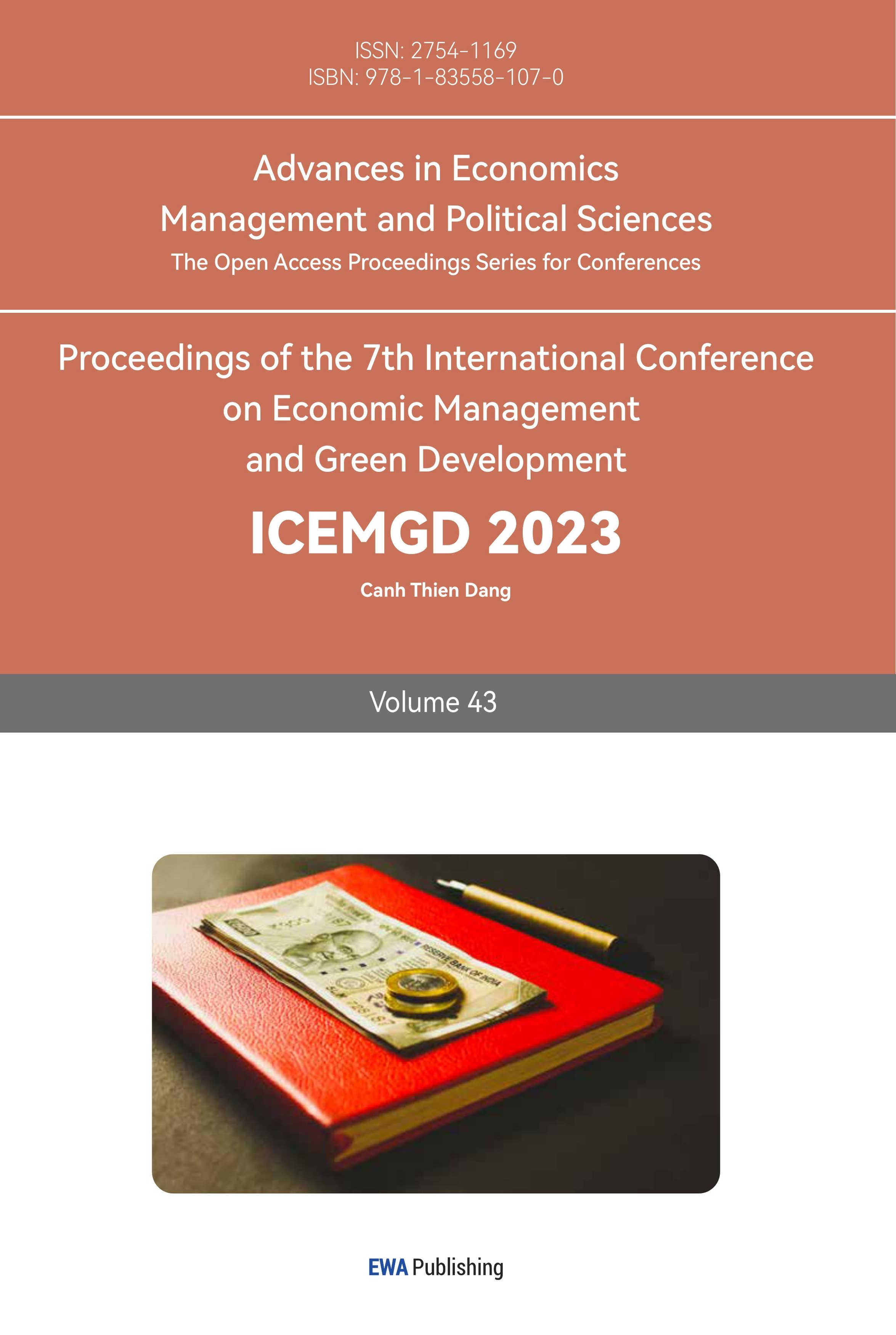References
[1]. Wikipedia, Economic inequality, https://en.wikipedia.org/wiki/Economic_inequality#Effects
[2]. Peter. Bondarenko, unemployment rate, Encyclopaedia Britannica, https://www.britannica.com/money/unemployment-rate
[3]. Advances in Psychiatric Treatment (2004), vol.10, 216-224 Murali V/Oyebode F/ Poverty, social inequality, and mental health
[4]. Li, T., Lai, J. C., Wang, Y., & Zhao, D. (2016). The long-run relationship between inequality and growth in post-reform China: New evidence from dynamic panel model. International Review of Economics and Finance January, 41, 238–252.
[5]. He, A. J., Zhang, C., & Qian, J. (2022). COVID-19 and social inequality in China: the local–migrant divide and the limits of social protections in a pandemic. Policy and Society, 41(2), 275-290.
[6]. Li, Y., & DaCosta, M. N. (2013). Transportation and income inequality in China: 1978–2007. Transportation Research Part A: Policy and Practice, 55, 56-71.
[7]. Chen, Y., Yuan, M., & Zhang, M. (2023). Income inequality and educational expenditures on children: Evidence from the China Family Panel Studies. China Economic Review, 78, 101932.
[8]. Yan Li, Maria N. DaCosta. (2013). Transportation and income inequality in China: 1978–2007. Volume 55, September 2013, Pages 56-71
Cite this article
Li,T.;Chen,Y.;Xing,Z. (2023). The Reasons and Solutions for Economic Inequality in China. Advances in Economics, Management and Political Sciences,43,232-239.
Data availability
The datasets used and/or analyzed during the current study will be available from the authors upon reasonable request.
Disclaimer/Publisher's Note
The statements, opinions and data contained in all publications are solely those of the individual author(s) and contributor(s) and not of EWA Publishing and/or the editor(s). EWA Publishing and/or the editor(s) disclaim responsibility for any injury to people or property resulting from any ideas, methods, instructions or products referred to in the content.
About volume
Volume title: Proceedings of the 7th International Conference on Economic Management and Green Development
© 2024 by the author(s). Licensee EWA Publishing, Oxford, UK. This article is an open access article distributed under the terms and
conditions of the Creative Commons Attribution (CC BY) license. Authors who
publish this series agree to the following terms:
1. Authors retain copyright and grant the series right of first publication with the work simultaneously licensed under a Creative Commons
Attribution License that allows others to share the work with an acknowledgment of the work's authorship and initial publication in this
series.
2. Authors are able to enter into separate, additional contractual arrangements for the non-exclusive distribution of the series's published
version of the work (e.g., post it to an institutional repository or publish it in a book), with an acknowledgment of its initial
publication in this series.
3. Authors are permitted and encouraged to post their work online (e.g., in institutional repositories or on their website) prior to and
during the submission process, as it can lead to productive exchanges, as well as earlier and greater citation of published work (See
Open access policy for details).
References
[1]. Wikipedia, Economic inequality, https://en.wikipedia.org/wiki/Economic_inequality#Effects
[2]. Peter. Bondarenko, unemployment rate, Encyclopaedia Britannica, https://www.britannica.com/money/unemployment-rate
[3]. Advances in Psychiatric Treatment (2004), vol.10, 216-224 Murali V/Oyebode F/ Poverty, social inequality, and mental health
[4]. Li, T., Lai, J. C., Wang, Y., & Zhao, D. (2016). The long-run relationship between inequality and growth in post-reform China: New evidence from dynamic panel model. International Review of Economics and Finance January, 41, 238–252.
[5]. He, A. J., Zhang, C., & Qian, J. (2022). COVID-19 and social inequality in China: the local–migrant divide and the limits of social protections in a pandemic. Policy and Society, 41(2), 275-290.
[6]. Li, Y., & DaCosta, M. N. (2013). Transportation and income inequality in China: 1978–2007. Transportation Research Part A: Policy and Practice, 55, 56-71.
[7]. Chen, Y., Yuan, M., & Zhang, M. (2023). Income inequality and educational expenditures on children: Evidence from the China Family Panel Studies. China Economic Review, 78, 101932.
[8]. Yan Li, Maria N. DaCosta. (2013). Transportation and income inequality in China: 1978–2007. Volume 55, September 2013, Pages 56-71









